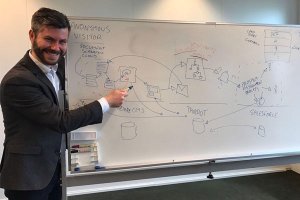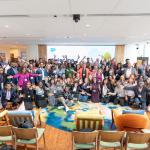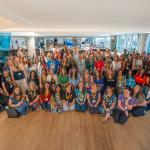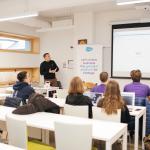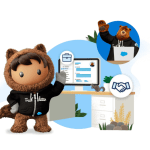Curious to know what it takes to be a Marketing Cloud Architect at Salesforce? Lukas Lunow joined the Denmark Ohana in February 2017 and has since been blazing a trail to success, experiencing the most supportive culture he’s ever encountered and combining his biggest passions. Here’s his story…
If you asked me twenty years ago if I would spend my career building bridges, the answer would most definitely have been no. Having been passionate about technology from my very early years, when games and programs were something you stored on cassette tapes, I had my mind set firmly on a theoretical education in the IT field.
Fast forward to my years studying Computer Science in Copenhagen, I quickly discovered there was more to IT than complex algorithms and memory optimisation. If I were to have a future within IT, I knew it would be with a broader, more business-orientated approach. After initially working as a developer, my role changed towards project management and product owner positions, focusing on e-commerce and marketing areas.
How did your Salesforce adventure begin?
Working with ambitious companies, you will cross paths with Salesforce at some point. For me, this was 2013, when I experienced both Sales Cloud and Marketing Cloud first-hand. Having worked with other vendors in the area of email marketing automation, the opportunity to experience Salesforce was an eye-opener.
After seeing their edge over the competition, I promised myself I would work there one day. What’s more, I set this goal before having any knowledge of the company behind it, and based this only on the impression received when using the software. Last year, this plan came together.
Why did you choose to be a Marketing Cloud Architect?
When I was working in IT, I always strove to be a trusted advisor to my clients, putting effort into understanding their marketing processes. This put together with my passion for technology, allowed me to ensure businesses got the most out of their investment in marketing applications and understood the potential it would bring. I also found myself in interesting discussions with clients on the content of their campaigns, such as the number of emails to include in a welcome journey.
Looking back on the road to how I became a Marketing Cloud Solution Architect, I’ve not gotten to where I am today by following a specific path. Instead, I saw this position fitting with my experience and jumped at the opportunity to apply. And now, at the world’s best place to work, I can combine my biggest passions.
Sharing my passion for marketing technology is not only limited to enclosed meeting rooms but also through countless Salesforce events around Europe. I meet with both existing and potential Salesforce clients to discuss the latest trends and inspire each other.
If you love engaging with people, Salesforce gives you every imaginable opportunity, and it’s just up to you to grab it.
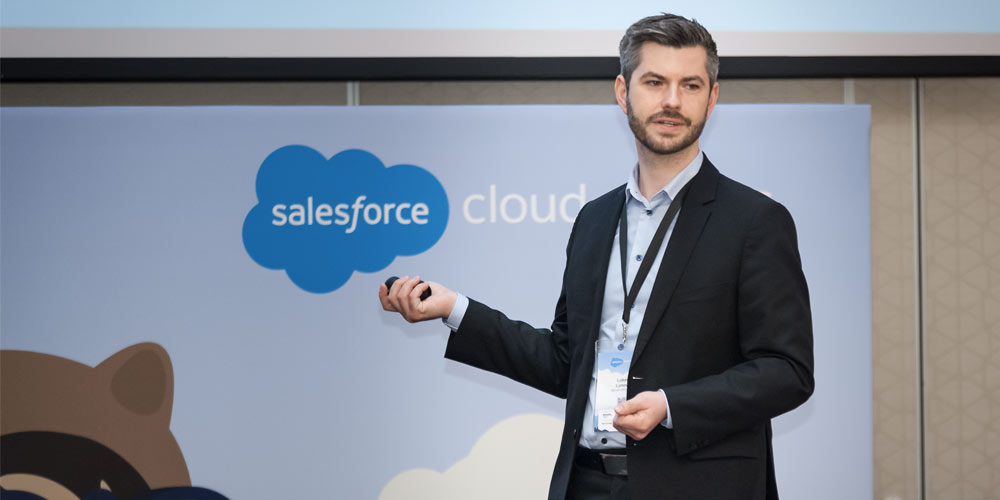
Tell us about the CSG organisation at Salesforce.
The Customer Success Group (CSG) is a crucial part of Salesforce, ensuring not only the right wires are connected, but most importantly, the customer understands the solution delivered, and learns to use it to its full potential. The role is therefore at least as much about business transformation, as technology.
Cross-department teams need to start working together, on brand new processes, which often are not defined beforehand. Relying on the right advice from a solution architect means a big difference in a project’s success, and together with the rest of the CSG team, we help our customers to achieve business value and ultimately success, faster.
Why Salesforce, why now?
Salesforce has been experiencing phenomenal growth for many years and is hiring many skilled specialists each month. After seeing a few of my connections join the company, I reached out to them to get a better understanding of Salesforce and its culture.
As I hadn’t heard about the Ohana culture before, it came as a great and positive surprise to me to see how trust, innovation, equality and growth are all very embedded values of Salesforce, and Ohana (meaning family in Hawaiian) comes to life as the most supportive culture I have yet experienced in any of the companies I have worked for. And I was yet to experience the best part.
Another key value of Salesforce is giving back to our communities, and any employee can spend seven working days on volunteering activities each year. This can be smaller activities, such as helping out in a local homeless shelter, but also bigger scale projects, which take up an entire week. Anyone can follow their passions and get involved with a cause they choose to support, and colleagues are always happy to join.

My best volunteering experience was travelling to Cambodia, where a team of 20 Salesforce employees spent a week working together with locals, building two houses for families in need. As a large part of the country struggles with severe poverty, many are forced to live in makeshift huts built from leaves and sticks. Leaving those families with solid wooden houses, confirms you have made a real life-changing difference for someone in need.
People like Lukas are blazing trails every day at Salesforce. Join us and you can too! Let us know if you’re interested.
